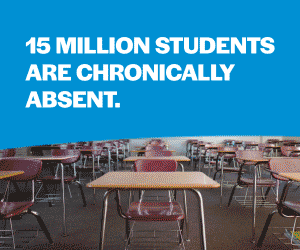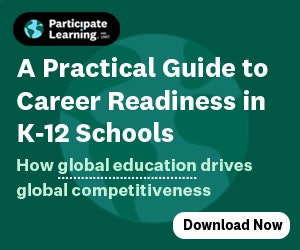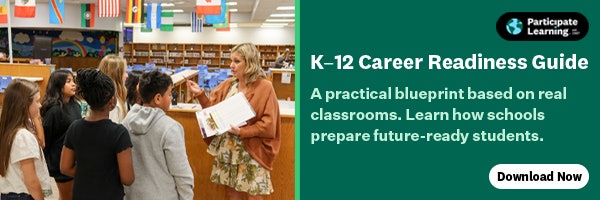
The dismal results from the fall 2024 release of "The Nation's Report Card" confirmed what many educators already feared: post-pandemic academic recovery has been middling at best. With reading and math scores still falling short of pre-pandemic levels across every tested grade level, we face an uncomfortable truth—for academics as well as social-emotional and behavioral risk factors, the pandemic is not over. We're at halftime.
This metaphor is particularly urgent as we consider the Class of 2032, students who were kindergarteners when schools shuttered in March 2020. These students, now entering sixth grade this month, represent the critical cohort of our unfinished recovery work. According to 2024 NAEP data, only 39% of fourth graders are at or above proficiency in reading, while just 31% meet proficiency standards in math—students who are now transitioning to middle school with foundational gaps that threaten their path to graduation.
Academic Mismatch in Critical Years
The University of Chicago Education Lab's recent research on high-dosage tutoring reveals that these students face an "academic mismatch"—when students behind grade level struggle to engage with grade-level instruction not targeted to their needs (Bhatt et al., 2025). The implication is stark: students who fall behind learn less in each subsequent year, winding up farther and farther behind over time. For the Class of 2032, this academic mismatch couldn't come at a worse time, as they enter the critical middle school years that research consistently shows are predictive of high school graduation rates.
Beyond Traditional Warning Systems
Traditional early warning systems that rely on attendance, discipline, and course completion data are being challenged by the reality that extends far beyond traditional academic metrics. These students missed out on crucial behavioral supports that include social-emotional learning (SEL) during their foundational kindergarten and early elementary years. They enter middle school without having received the direct behavior management and tier one SEL instruction that are hallmarks of early grade levels. More than 80% of public schools report that the pandemic negatively impacted students' behavior and social-emotional development, creating a generation of students struggling with engagement and sense of belonging in ways that traditional ABC monitoring systems were never designed to address.
Forward-thinking districts like Miami-Dade County Public Schools and San Diego Unified School District are taking a "beyond the ABCs approach," prioritizing mental health and wellness of students and screening for behavioral at-risk factors in addition to academics. The solution requires moving beyond traditional academic interventions to embrace what researchers call "whole child MTSS"—Multi-Tiered Systems of Support that address both academic and non-academic factors simultaneously. This approach recognizes the interconnected nature of student success, particularly the critical relationship between reading proficiency, Algebra 1 completion, and non-academic factors like attendance, social emotional dispositions, behavior toward peers, and the quality of relationships within the school community.
HS Literacy and Algebra 1
Secondary literacy must be prioritized with unprecedented urgency. Students entering middle school significantly below grade-level reading benchmarks lack the comprehension and vocabulary skills needed to read to learn across all content areas. Secondary students need to be screened like their elementary peers. Their teachers need to be informed of their independent reading levels. Without immediate intervention and coaching of secondary teachers, these gaps will compound as students encounter increasingly complex texts via science, social studies, and mathematics word problems that require sophisticated reading skills.
Equally critical is early preparation for Algebra 1—a course that decades of research have established as a paramount indicator of diploma attainment. Students who complete Algebra 1 by the end of 9th grade are much more likely to graduate on time than their peers who enter sophomore year behind in this fundamental course required in both state and local graduation requirements. For the Class of 2032, ensuring strong mathematical foundations through targeted intervention is imperative to prevent later failure in this critical milestone course.
The non-academic factors—what researchers identify as family status, learner profile characteristics, trauma exposure, and relationship quality—require equal attention. Students need to feel a sense of belonging and connection at school to engage deeply in learning and take the academic risks necessary for growth. Schools must screen for both academic and non-academic risk factors, providing targeted interventions that address the whole child.
Evidence-Based Solutions Exist
The good news is that evidence-based solutions exist. High-dosage tutoring, when implemented with sufficient frequency and duration, can accelerate learning significantly. Comprehensive MTSS frameworks that integrate academic screening with social-emotional behavioral risk assessments can identify students at risk before they fail. The National Center for Intensive Intervention provides published ratings of digital platforms that can deliver benchmarking and progress monitoring as well as targeted and adaptive personalized reading and math skill-building.
Time is Running Short
But time is running short. In just three years, the Class of 2032 will be in high school and expected to pass Algebra 1. Every month of inaction means these students fall further behind, making recovery increasingly difficult and expensive.
We are at halftime, not game over. But halftime requires a new game plan. Secondary schools must urgently implement comprehensive, whole-child MTSS approaches. Our 6th graders deserve nothing less than a full-court press to ensure they cross the graduation stage prepared for success in college, career, or whatever comes next in June 2032.
Dr. Robert R. Zywicki is the Superintendent in Residence at Rutgers University's Center for Effective School Practices and a Senior Director with Renaissance Learning. He is the author of the forthcoming All Paths Lead to Graduation: Fulfilling the Promise of an Education in America, published by the MTSS Leadership Network.
References
Bhatt, M. P., Chau, T., Condliffe, B., Davis, R., Grossman, J., Guryan, J., Ludwig, J., Magnaricotte, M., Mattera, S., Momeni, F., Oreopolous, P., & Stoddard, G. (2025). Personalized Learning Initiative interim report: Findings from 2023-24. University of Chicago Education Lab and MDRC. https://educationlab.uchicago.edu/
National Assessment of Educational Progress. (2024). The Nation's Report Card. National Center for Education Statistics. https://www.nationsreportcard.gov/
Region 6 Comprehensive Center. (2022). Implementing MTSS in secondary schools: Challenges and strategies. SERVE Center at the University of North Carolina at Greensboro. https://www.serve.org/
Starzecki, A. L. (2025). Prioritizing graduation for students with disabilities. School Administrator Magazine, June 2025. https://www.aasa.org/
Zywicki, R., Kulich, L., & Chintala, J. (2025). Portrait of a graduate: How to use whole child MTSS to provide the academic and non-academic support every student needs for success. Renaissance Learning. https://www.renaissance.com/





























